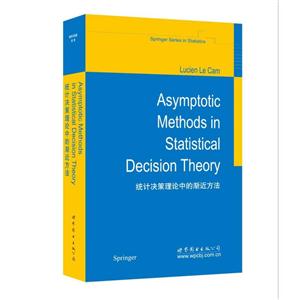
作者:(俄)法德维
页数:592
出版社:世界图书出版公司
出版日期:2013
ISBN:9787510058264
电子书格式:pdf/epub/txt
内容简介
本书旨在讲述逆散射方法及其在孤立子中的应用—哈密顿方法。前半部分讲述非线性Schrodinger方程;后半部分介绍sine-Gordon方程和Heisenberg方程,以及构成他们解的可积模型和方法的分类。
目次:(一)非线性Schrodinger方程:零曲率表示;黎曼问题;哈密尔顿公式;(二)可积发展问题方程的一般理论:基本例子及其一般性质;基础连续模型;可积模型分类和分析的李代数方法。
作者简介
Ludwig D.Faddeev是国际知名学者,在数学和物理学界享有盛誉。本书凝聚了作者多年科研和教学成果,适用于科研工作者、高校教师和研究生。
本书特色
《孤立子理论中的哈密顿方法(英文)》讲述了:the book is based on the hamiltonian
interpretation of the method, hence the title. methods of
differential geometry and hamiitonian formalism in particular are
very popular in modern mathematical physics. it is precisely the
general hamiltonian formalism that presents the inverse scattering
method in its most elegant form. moreover, the hamiltonian
formalism provides a link between classical and quantum mechanics.
so the book is not only an introduction to the classical soliton
theory but also the groundwork for the quantum theory of solitons,
to be discussed in another volume.
the book is addressed to specialists in mathematical physics.
this has determined the choice of material and the level of
mathematical rigour. we hope that it will also be of interest to
mathematicians of other specialities and to theoretical physicists
as well. still, being a mathematical treatise it does not contain
applications of soliton theory to specific physical
phenomena.
目录
introduction
references
part one the nonlinear schrodinger equation (ns model)
chapter ⅰ zero curvature representation
1.formulation of the ns model
2.zero curvature condition
3.properties of the monodromy matrix in the quasi-periodiccase
4.local integrals of the motion
5.the monodromy matrix in the rapidly decreasing case
6.analytic properties of transition coefficients
7.the dynamics of transition coefficients
8.the case of finite density.jost solutions
9.the case of finite density.transition coefficients
10.the case of finite density.time dynamics and integrals of themotion
1.notes and references
references
chapter ⅱ the riemann problem
1.the rapidly decreasing case.formulation of the riemannproblem
2.the rapidly decreasing case.analysis of the riemann problem
3.application of the inverse scattering problem to the nsmodel
4.relationship between the riemann problem method and thegelfand-levitan-marchenko integral equations formulation
5.the rapidly decreasing case.soliton solutions
6.solution of the inverse problem in the case of finite density.theriemann problem method
7.solution of the inverse problem in the case of finite density.thegelfand-levitan-marchenko formulation
8.soliton solutions in the case of finite density
9.notes and references references
chapter ⅲ the hamiltonian formulation
1.fundamental poisson brackets and the matrix
2.poisson commutativity of the motion integrals in thequasi-periodic case
3.derivation of the zero curvature representation from thefundamental poisson brackets
4.integrals of the motion in the rapidly decreasing case and in thecase of finite density
5.the a-operator and a hierarchy of poisson structures
6.poisson brackets of transition coefficients in the rapidlydecreasing case
7.action-angle variables in the rapidly decreasing case
8.soliton dynamics from the hamiltonian point of view
9.complete integrability in the case of finite density
10.notes and references
references
part two general theory of integrable evolution equations
chapter ⅰ basic examples and their general properties
1.formulation of the basic continuous models
2.examples of lattice models
3.zero curvature representation’s a method for constructingintegrable equations
4.gauge equivalence of the ns model (#=-1) and the hm model
5.hamiltonian formulation of the chiral field equations and relatedmodels
6.the riemann problem as a method for constructing solutions ofintegrable equations
7.a scheme for constructing the general solution of the zerocurvature equation. concluding remarks on integrableequations
8.notes and references
references
chapter ⅱ fundamental continuous models
1.the auxiliary linear problem for the hm model
2.the inverse problem for the hm model
3.hamiltonian formulation of the hm model
4.the auxiliary linear problem for the sg model
5.the inverse problem for the sg model
6.hamiltonian formulation of the sg model
7. the sg model in light-cone coordinates
8. the landau-lifshitz equation as a universal integrable modelwith two-dimensional auxiliary space
9. notes and references
references
chapter ⅲ fundamental models on the lattice
1. complete integrability of the toda model in the quasi-peri-odiccase
2. the auxiliary linear problem for the toda model in the rap-idlydecreasing case
3. the inverse problem and soliton dynamics for the toda model inthe rapidly decreasing case
4. complete integrability of the toda model in the rapidlydecreasing case
5. the lattice ll model as a universal integrable system withtwo-dimensional auxiliary space
6. notes and references
references
chapter ⅳ lie-algebraic approach to the classification andanalysisof lntegrable models
1. fundamental poisson brackets generated by the currentalge-bra
2. trigonometric and elliptic r-matrices and the relatedfunda-mental poisson brackets
3. fundamental poisson brackets on the lattice
4. geometric interpretation of the zero curvature representationand the riemann problem method
5. the general scheme as illustrated with the ns model
6. notes and references
references
conclusion
list of symbols
index
节选
《孤立子理论中的哈密顿方法(英文)》由世界图书出版公司北京公司出版。














